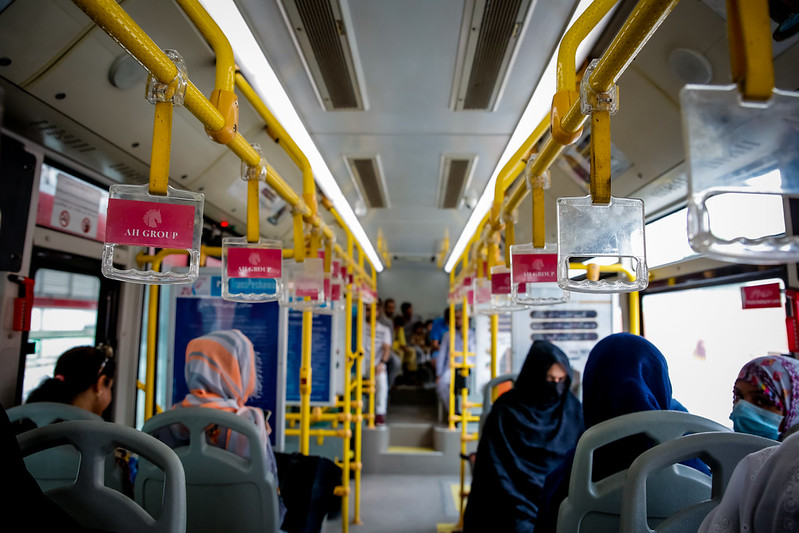
For decades, the city of Peshawar, in the Khyber Pakhtunkhwa province of northern Pakistan, has been rocked by wars and acts of terrorism that disrupted public safety and made it difficult to plan the city’s growth. A particularly challenging consequence was that it had no formal public transport system. Instead, the city was served by a patchwork of hundreds of small private operators, who ran decades-old buses, trucks and taxis. While keeping the city from complete breakdown, it was unreliable, polluting and practically unusable for women and people with disabilities.
“The system was not secure and safe for women to travel,” recalled Mehdiya Ahmar, a female resident. “I had to go everywhere with my father or my brother because it was very difficult for women to travel in local transport.”
The city was in a bad equilibrium. For many people, the problems accessing transportation meant that it was a daily struggle to access jobs, education and healthcare. Women and transgender people experienced harassment and rude behavior on buses, and there was limited to no accessibility for wheelchair users. The situation was also challenging for bus operators, who were stuck working long shifts at little or no profit, no health insurance, often in debt to bus owners and subject to wanton police fines.
This all changed in Peshawar with the introduction of a new transportation system called Zu Peshawar, which means “Let’s Go Peshawar” in Pashto. The centerpiece of the system is a Bus Rapid Transit (BRT) system, which delivers regular cross-city bus services to an average of 250,000 passengers a day. With accessibility at the core of its design, the Zu Peshawar system enables greater numbers of women and disabled residents to ride safely.
Changing Lives
In 2013, the new government of Khyber Pakhtunkhwa province committed to revamping the urban transport system of the city with a state-of-the-art bus rapid transit system that delivers more efficient and reliable service than traditional buses that share the road with cars, relying on dedicated lanes and efficient boarding systems.
The central focus in designing the BRT was to create a system that was inclusive and accessible for the most vulnerable populations — in particular, women, people with disabilities and transgender people. The system has many gender-sensitive design features, such as reserved seating, separate bus entrances and ticketing booths, better-lit stations and walkways, and close-circuit television monitors in its stations and buses.
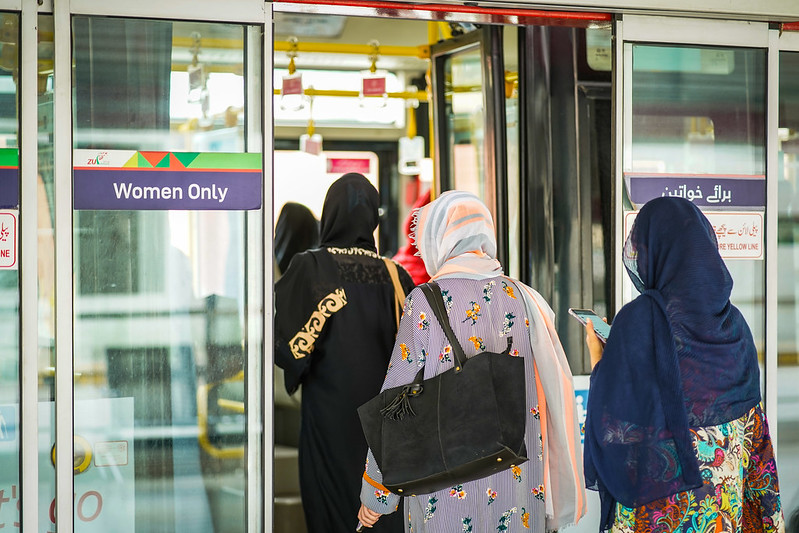
For Ahmar, the new bus system means taking public transportation independently of her male family members and at later times in the evening. According to TransPeshawar, the publicly-owned company created to oversee Zu Peshawar, women now comprise 20% of BRT passengers, a massive change from the previous transport system which had about 2% female ridership.
Visually- and hearing-impaired people are now able to navigate bus transit because there are sign language and sound systems to guide them through stations and buses. Wheelchair users have 100% step-free access to stations and buses and can now reach major educational and commercial centers that are systematically connected by the BRT.
For Namkeen, a transgender rights activist, the change has been transformational for transgender people. When using the old buses, they would sometimes be refused access and often charged a higher fare than other travelers. “People used to shout at us, hoot at us,” Namkeen said. “After the commencement of the BRT, our life changed for the better. The journey is very comfortable, inexpensive, secure and safe. We travel without any fear and danger of harassment.”
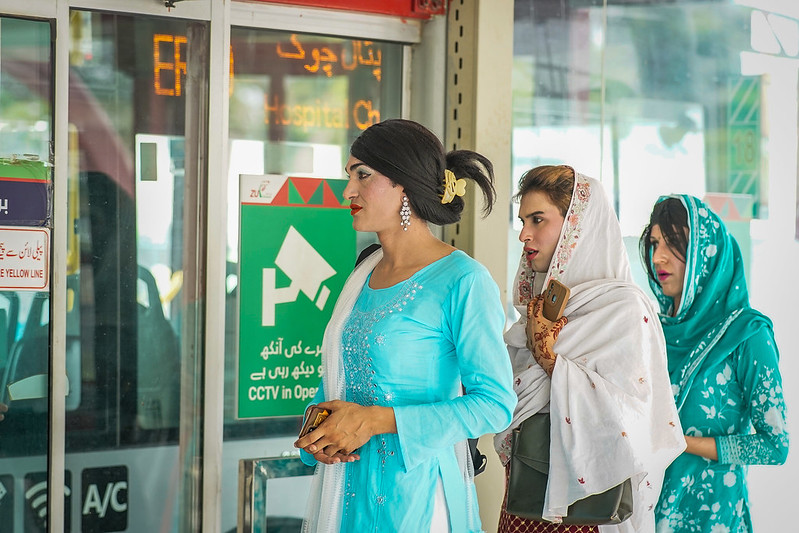
An Equitable Transportation Transition
TransPeshawar faced a major challenge in ensuring that the new BRT service would not ruin the livelihoods of the city’s existing transport operators. Many drivers and bus owners that operated in the city for decades objected to the BRT plans because they were worried about the impact on their jobs and families.
TransPeshawar designed a Bus Industry Restructuring Program to mitigate negative impacts on existing owners, operators, and drivers. As a result, old polluting vehicles were scrapped in return for financial compensation, with operators and drivers receiving an additional year of compensation and opportunities for training, including the potential to get hired as new drivers into the system.
Inayat Ullah, who drove buses for 25 years before the BRT was built, faced a typical situation for drivers at the time — long shifts on old buses, unpredictable police fines that were deducted from already low wages and frequent harassment from passengers. Ullah is now a driver for Zu Peshawar, and explained that the benefits have been multi-dimensional, ranging from better working conditions and public perception to improvements in his home life.
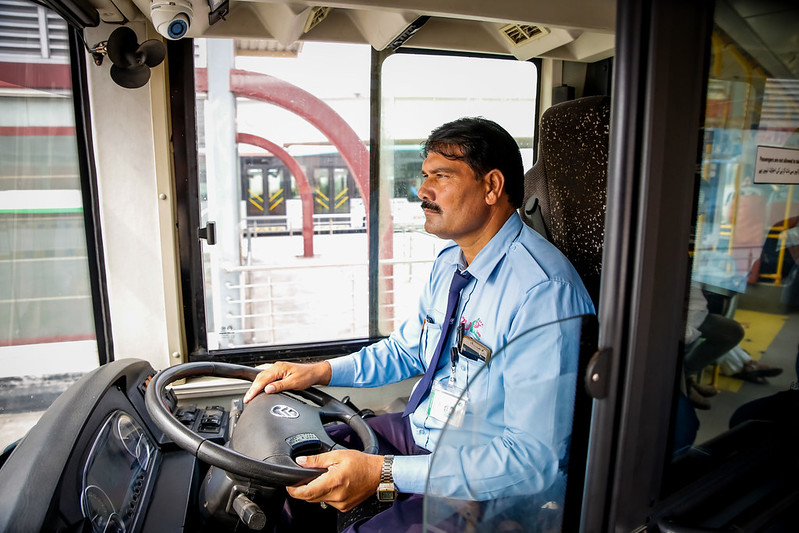
“Before BRT, our duty was 14 to 15 hours a day, now our duty is reduced to 7 to 8 hours a day. We have a good salary. We have facilities like food, lodging, and medical. We get extra time to enjoy ourselves with our children and for doing our home activities,” he said. “People have a positive view of us and we are proud of it. People are very happy. People respect us and we are proud of it. We are very satisfied.”
A Successful Launch Amid a Pandemic
Zu Peshawar has become a symbol of recovery and resilience for Peshawar after several challenging decades. The near-finished project hit a major roadblock when the COVID-19 pandemic grounded the city to a halt. In order to finish on time and provide people with a safe mobility option, TransPeshawar designed COVID-safe working protocols to continue construction. Launching in August 2020, the BRT system transported a daily peak of 265,000 passengers in its first year of operation.
The system runs on diesel-hybrid buses, a design that was carefully considered and chosen based on the technological expertise currently available and the city’s electric grid capacity. Zu Peshawar’s buses are substantially less polluting and efficient than older transportation methods in the city, resulting in considerable emission reductions. As capacity grows, there are plans to upgrade to fully electric buses.
Since commencing operations, the system has inaugurated additional features including an integrated bicycle-sharing program. The system’s advertising capabilities have been used to spread the word about polio vaccination, campaigns on food and nutrition, and breast cancer awareness programs. Plans for expanding the system with a central corridor and off-corridor route covering a nearly 50-kilometer area, as well as the construction of new integrated commercial areas to increase revenue for the system has already begun.
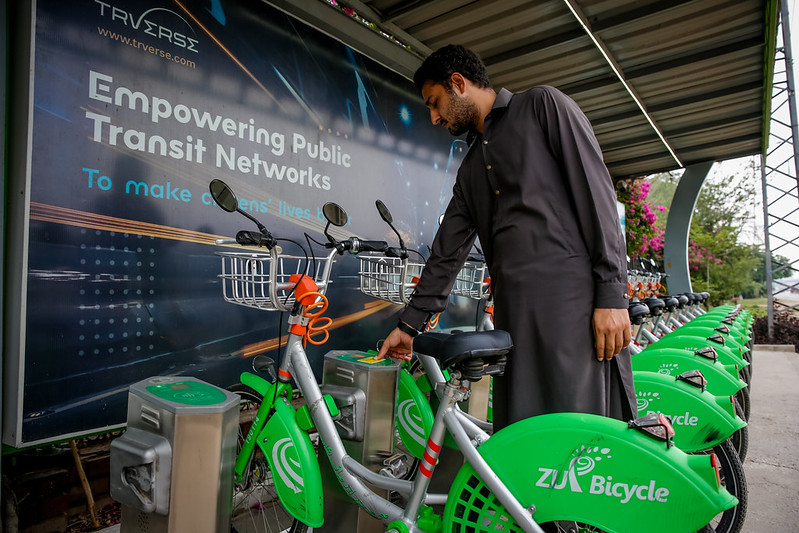
The success of Zu Peshawar and its perseverance to start operations in the middle of the pandemic has been a national inspiration and encouraged other cities in Pakistan including Karachi, Islamabad, Abbottabad, Mardan and Swat to make plans to upgrade their transit systems. It shows the power of public transportation to improve the lives of a city’s residents. Far from being just a way of getting around, the Zu Peshawar system unlocks opportunities for people previously excluded from public transit.
The 2021-2022 WRI Ross Center Prize for Cities celebrates projects and initiatives showing how to live and thrive in turbulent times. From five finalists, one grand prize winner will be announced February 1, 2023.
This article originally appeared on WRI’s Insights.
Salome Gongadze is the Evaluation, Learning, and Engagement Specialist for WRI Ross Center Prize for Cities.
Anne Maassen is the Global Lead for WRI Ross Center Prize for Cities.





